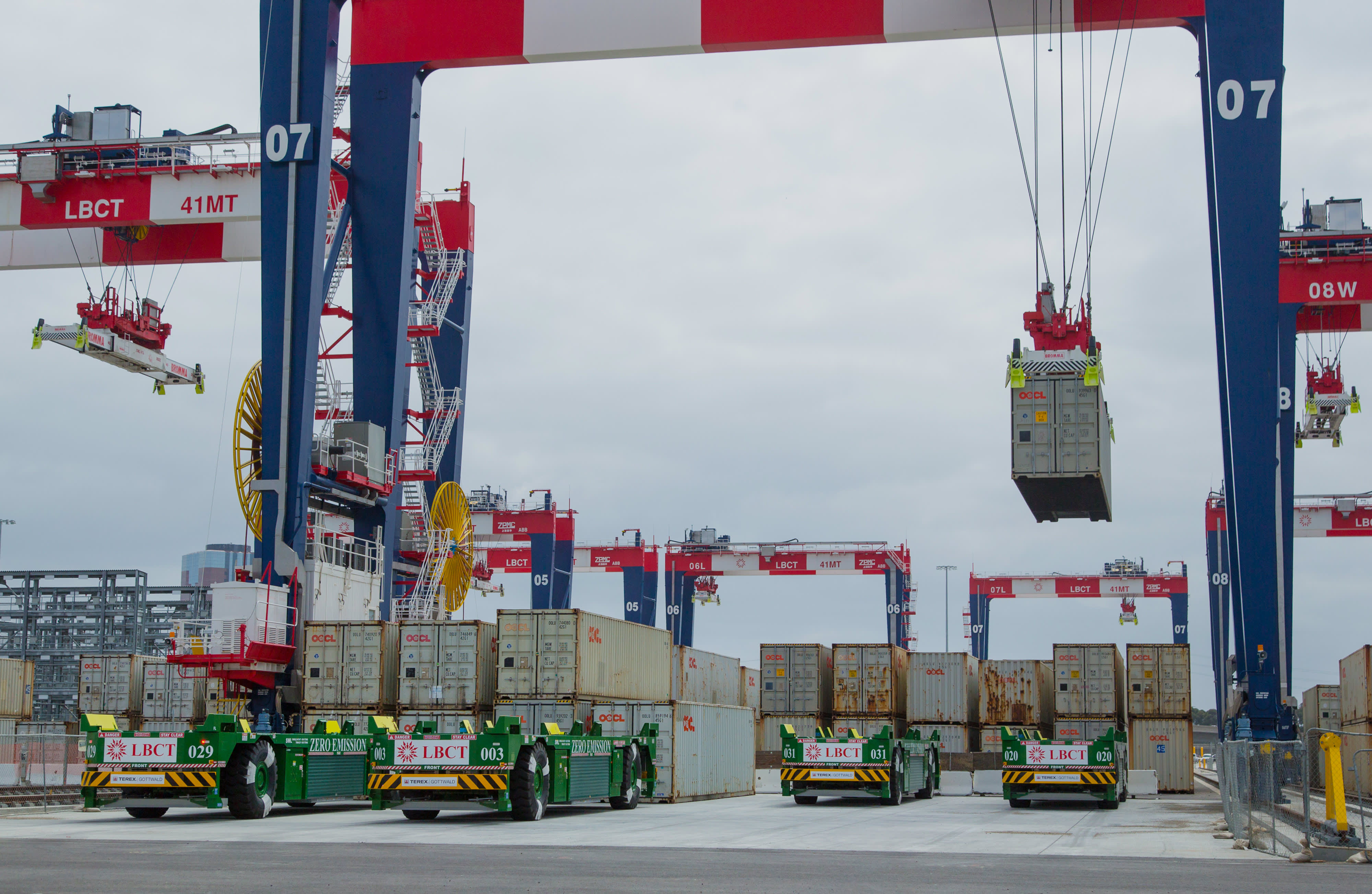A breakdown in East and Gulf Coast port talks has occurred due to disagreements over the use of semi-automated cranes.

- On Wednesday, the United States Maritime Alliance stated that the union's stance on automation is hindering the negotiation of a new labor deal, with a January 15 deadline to either reach an agreement or face another strike.
- Semi-automated cranes are crucial for meeting future supply chain demands, according to USMX.
- The International Longshoremen's Association has stated in the past that they want new contract language to explicitly state "no automation means no automation."
The negotiations between the United States Maritime Alliance and the International Longshoremen's Association to prevent a new strike that could shut down port operations from New England to Texas starting in mid-January continue to be hindered by automation.
The USMX has stated that recent negotiations, following the three-day ILA strike that halted port operations along the East and Gulf Coasts in October, have stalled due to the use of automation at ports.
On Wednesday, the group representing port owners in negotiations with the union released a statement stating that although some progress had been made, there was no advancement in automation discussions over the past two days, and no new date has been scheduled to resume talks.
"Although we made progress on several issues, we couldn't achieve substantial advancements in our technology discussions. Unfortunately, the ILA is pushing for an agreement that would hinder our industry's growth by limiting the use of technology that has been in place in some of our ports for over two decades, preventing us from adapting to meet the country's future supply chain needs."
The ILA strike ended in October after a tentative agreement on wage increases, and the parties agreed to work towards a permanent agreement by January 15 or face the possibility of another strike.
According to sources close to the negotiations, the use of semi-automated cranes with real-time data and positioning systems is the main obstacle in the talks. These cranes are operated by union workers using a remote control in an indoor operator's station, but they are not physically on the crane.
The ILA refused to provide any further information about the negotiations, stating only that they are communicating directly with union members.
It should come as no surprise that automation is a major roadblock.
Harold Daggett, ILA President, has consistently maintained his stance on automation. Following the negotiation of wages, Daggett stated, "The ILA included restrictions on automation and semi-automation in the last contract. The ILA aims to strengthen the language to ensure that no automation means no automation."
He pledged to have "absolutely no automation or semi-automation" and insisted that "all Container Royalty monies go to the ILA."
He also called semi-automation a "back-avenue into automation."
In a video message to union members during a September meeting ahead of the strike, Dennis Daggett, the executive vice president of the ILA and Harold Daggett's son, referred to automation as a "cancer."
We will continue to fight against the idea that robotics should replace human beings in their jobs, even if they are historically performed by humans, and we will not accept jobs in the future, no matter how much they pay.
The USMX stated on Wednesday that it does not seek technology to eliminate jobs.
"The modernization of our industry is crucial for enhancing worker safety, boosting productivity while safeguarding jobs, maintaining robust supply chains, and ultimately benefiting both American businesses and workers. We eagerly anticipate resuming negotiations with the ILA."
Stephen Lamar, CEO of the American Apparel and Footwear Association, expressed disappointment in a statement to CNBC regarding the International Longshoremen's Association's decision to walk away from negotiations for the East and Gulf Coast port contract. He noted that when negotiations broke down earlier this year, the ILA initiated a three-day strike in October that caused significant delays and backlogs that lasted weeks and negatively impacted American jobs and transportation networks globally.
Lamar emphasized the urgency of the ILA returning to the negotiating table to resolve outstanding issues regarding modernization so that a long-term, sustainable, and fair agreement can be finalized this year.
The impact of automation on union jobs is inconclusive. While a study by Dr. Michael Nacht and Larry Henry found that higher automation output at two semi-automated terminals in California increased jobs for the International Longshore and Warehouse Union, another study commissioned by the ILWU found that automation eliminated job hours and wages.

Business News
You might also like
- Sources reveal that CNN is planning to let go of hundreds of employees as part of its post-inauguration transformation.
- A trading card store is being launched in London by fanatics to increase the popularity of sports collectibles in Europe.
- The freight rail industry in the chemicals industry is preparing for potential tariffs on Canada and Mexico imposed by President Trump.
- Stellantis chairman outlines planned U.S. investments for Jeep, Ram to Trump.
- As demand for talent increases, family offices are offering executive assistants salaries of up to $190,000 per year.



















